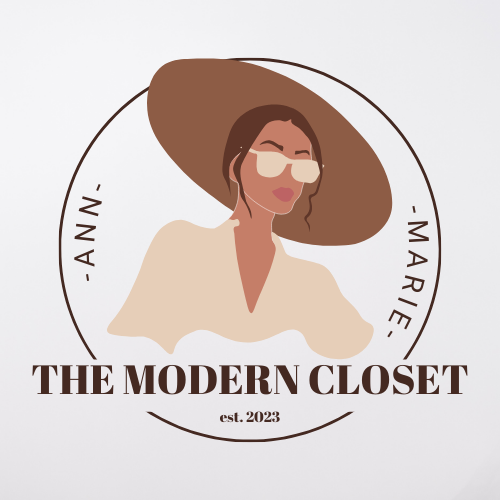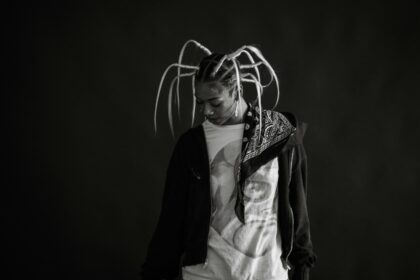
©2023 The Modern Closet. All rights reserved.

The relationship between music and fashion is a dynamic one, with each art form often reflecting and influencing the other. Few genres have been as impactful on mainstream styles as hip hop, which has transitioned from an underground culture to a global phenomenon. Originating from the streets of the Bronx in New York City, hip hop music and its associated culture have become a significant force not only in the entertainment industry but also in the world of fashion.
This blog post will explore the metamorphosis of hip hop fashion, beginning with its humble, utilitarian roots, to its current status as a tastemaker in the high-end fashion industry.
At its inception, hip hop was a reaction to the economic and social conditions of the inner-city. The fashion that emerged from these roots was a mix of elements, reflecting the creativity and resilience of a community seeking a voice. It was a blend of street style, influenced by the casual attire of youth, the flamboyance of disco, and the cultural identity of the Civil Rights Movement.
Early hip hop fashion was a response to the lack of resources and the desire to repurpose clothing in a way that was unique and expressive. The culture’s roots were seen in the necessity of practical, durable attire that could withstand the wear and tear of city life.
Trash-talking street battles weren’t the only form of competition among hip-hop’s innovators. There was also an unspoken challenge to create the freshest look that no one else could possess. This led to a DIY ethos where artists and fans alike personalized their outfits, often with graffiti art and bold color schemes, turning everyday garments into statements of individuality.
What once was a necessity-driven and locally inspired fashion statement soon became a global trend. The cultural shift was marked by hip hop’s entrance into the mainstream, and the fashion world took notice.
The early 1980s marked the beginning of hip hop’s shift into the high fashion space. Luxury brands became influenced by the bold aesthetic of hip hop stars, leading to tailored suits adorned with gold chains, and a proliferation of leather, fur, and silk—materials that were once considered exotic and out of place within street culture.
Hip hop celebrities began to embody the lifestyle they rapped about, and with the rise of MTV and music videos, their image was constantly on display. Recognizing the potential to tap into a lucrative market, fashion labels courted hip hop royalty for endorsements and collaborations.
Certain key elements have been consistent throughout the evolution of hip hop fashion, each serving as a marker of the genre’s unique aesthetic and attitude.
Baggy jeans, oversized t-shirts, and athletic wear became staples, reflecting the comfort and freedom of movement that served as an antithesis to traditional fashion constraints. Shoes, often classic or exclusive sneaker models, were a focal point. Jewelry, especially large chains and rings, spoke to the opulence that hip hop aspired to, while headwear, like baseball caps and beanies, became a way to personalize and add a finishing touch to the ensemble.
Today, the impact of hip hop fashion on current trends cannot be overstated. Streetwear has permeated high fashion, with luxury brands creating their own lines centered on the same principles of comfort, style, and luxury that hip hop first popularized.
The runway is traditionally where high-end fashion sets the tone for the coming season. Hip hop’s influence has seen a shift in the aesthetic of these shows, as it has not only been integrated into mainstream fashion but has also been the focus of entire collections.
Designers across the spectrum, from off-beat streetwear to classic couture, have found inspiration in the vibrant and unapologetically bold world of hip hop. Collections have been showcased that draw from the genre’s diverse history, whether it’s the utilitarian denim and workwear of its early days or the Garish Glamour of its modern mega stars.
The fashion industry continues to celebrate cultural integration and designers are increasingly looking to incorporate diverse influences. Hip hop’s prominence in fashion shows points to a wider movement within the industry towards a more inclusive and diverse concept of beauty and style.
The connection between hip hop and fashion is evident not only on the runways but also on red carpets and music videos. The style of hip hop stars has become as legendary as the music they produce.
From the iconic looks sported by early hip hop idols to the current trendsetters, fashion’s fusion with the genre shines through in music videos and award shows. Furthermore, with the rise of social media, artists have more platforms than ever to showcase their style, and fans have better access to the culture.
Hip hop fashion has played a significant role in challenging the stereotypes and lack of diversity in the fashion industry. It has prompted a broader range of body types and cultural influences, reflecting the audience’s demand for more inclusive and relatable fashion.
From the streets of the Bronx to the catwalks of Paris, hip hop fashion has come a long way. What began as a movement to claim one’s voice and identity through the art of music and personal branding has evolved into a powerful influence on the global fashion stage.
The legacy of hip hop fashion lies in its ability to challenge the status quo, break down barriers, and celebrate individuality. Today, the genre continues to push the boundaries of what is considered fashionable and has made a lasting imprint on the cultural landscape. It is a testament to the genre’s power and reach, demonstrating that music and fashion are not just reflections of our society—they have the potential to shape it.